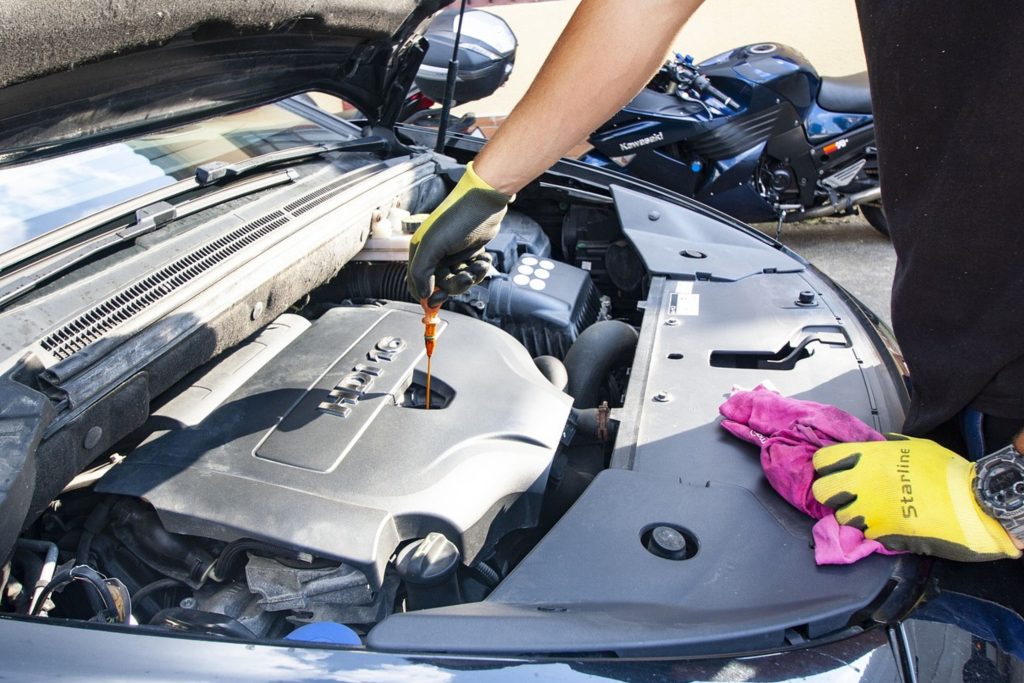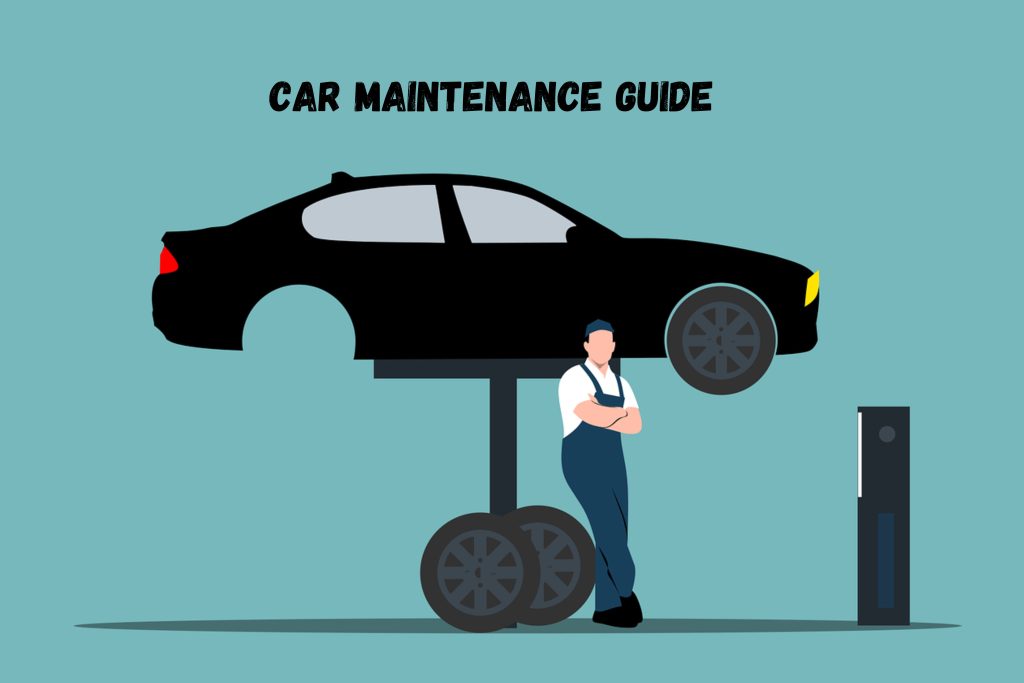
Embarrassingly, when I bought my first car I treated it like trash. Not on purpose. I just didn’t know how to take care of a car. I had saved up all of my money for the down payment and had never been more proud. What an accomplishment to have done this all on my own! Then it started falling apart.
The idea of car repairs and maintenance is daunting for many of us because we simply didn’t have anyone to teach us how to handle many of the issues that car owners will eventually all face. We worry about costs, getting ripped off by a mechanic, and transportation if our car needs to stay at the shop for multiple days.
Nine times out of ten, the things we put off because we don’t want to deal with the stress are pretty simple items, but we don’t know until we’re forced to face the issue. As a result, I have created a comprehensive guide for you on when to do maintenance in your car. Get ready to take charge of your car’s well-being and make sure it stays in top performance for miles to come!
What is Car maintenance?
Car maintenance is a series of typically small tasks that an individual should perform in order to keep their machine in optimal condition. These tasks range from cleaning your car to having parts replaced. Almost all of the items on this list can be done quickly at home, yet most new car owners are never given a list of “to-do’s” or “how-to’s”, so cars become neglected and expensive repairs start popping up.
When to do maintenance on your car
Maintenance varies based on a few factors that don’t always line up. For example, your should change your oil based on the miles you put on your car. You should replace your windshield wiper blades based on your climate, or how often you need to use them. You should change air filters annually. It’s a lot to track, and things tend to get overlooked.
Your Car Maintenance Guide

Hand Wash Your Car Weekly: Protect Your Paint
The general rule of thumb is to hand wash your car once a week to prevent surface contaminants from damaging your top coat and causing paint peeling. If you drive an older car or your TPMS isn’t working, make it a habit to manually check your tire pressure when you wash your car. Adjust your mirrors after cleaning them, and replace windshield wiper blades leaving streaks.
Know Your Car’s Oil Type: Optimize Oil Changes
Something to ask your mechanic and memorize is what type of oil your car needs—motor oil, semi-synthetic, or fully synthetic. The type of oil your vehicle requires will determine how often you need to get your oil changed. While you’re there, it doesn’t hurt to ask the mechanic if they can check your fluid levels.
Maintain Air Filters: Ensure Proper Circulation
One of the most neglected car maintenance items has to do with the air filters in our cars. Just like the filters in your home HVAC system, your car needs filters changed to keep your heating and cooling system functioning properly. Luckily, your car’s filters only need to be changed about once a year.
Prioritize Tire and Seat Belt Care: Ensure Safety
We never really think about our tires or seat belts until something goes wrong. The average tire will last 3-5 years, and the treads should be checked annually. Additionally, you want to make sure you have a donut, or temporary tire and a jack in your car in case of emergency. For your seatbelts, if the buckle sticks or the straps are frayed or don’t release properly, they need to be replaced. While both of these items might sound daunting, they’re not that hard.
Replace Spark Plugs: Ensure Engine Efficiency
Your spark plugs are what create the mixture of air and fuel, which then creates a small explosion that produces power for your engine. As your spark plugs age, the space between them grows, and you begin to lose efficiency and even misfire. It’s recommended that you replace your spark plugs between every 20,000-40,000 miles.
Maintain Brakes: Ensure Efficient Braking
Typically, if you hear squeaking or grinding when you press your brakes, it’s time to change the brake pads. Other indicators to look out for are a vibration when braking, or noticing your car is taking longer to brake. Brakes that function properly are 6.4 mm or ¼ an inch thick or more. Once your brake pads reach about half that thickness, 3.2 mm or ⅛ of an inch, it’s time to replace them. Since the average brake is good anywhere from 25,000 to 65,000 miles, and on occasion can run through 80,000 miles, it’s difficult to base brake pad replacement on mileage or time.
Car maintenance checklist

- Replace window wiper blades when they start to drag water or make noise
- Check your tire pressure weekly if your car doesn’t have a TPMS
- Check the treads on each tire annually
- Readjust your mirrors to manufacturer recommendations
- Check each light on your car to see if any bulbs need to be changed monthly
- Replace your air filters annually
- Check your spark plugs
- See if it’s time for an oil change
- Look at the fluids in your car to see if anything is running low
- Have your brake pads checked (every 30k miles in urban areas, and 80k miles if you live in a low-traffic area or drive mostly on highways) and replace as needed
- Make sure beat belts and holders are in the correct position and functioning properly
Car Maintenance Tasks You Can Do at Home
This will depend on your own skill set and what you’re able to learn and do confidently. You can do just about any maintenance task at home. Realistically, and especially if you’re new to car maintenance, you probably want to outsource some of that work.
Start with the Basics
- Cleaning your car, changing wiper blades, and replacing light bulbs are easily achievable tasks for most car owners.
- Keeping your tires properly inflated is also a straightforward job that doesn’t demand extensive know-how.
Take on Bigger Tasks
- Once you become more familiar with your car, you can move on to more significant tasks like changing the oil and oil filter, replacing brake pads, and even learning how to change spark plugs.
Limitations of Home Maintenance
- Certain tasks, such as replacing the cambelt, are more complex and challenging to do at home without proper guidance or instruction.
- Learning how to disassemble and reassemble parts correctly is crucial for tackling more intricate tasks.
- Luckily, the items that are most difficult to do at home are the ones that you need less often. And can be managed with the help of a professional when the time comes.
What parts of the car need the most maintenance?
Quick items like your tires and windshield wipers require the most maintenance. They’re both critical in getting you safely to and from home and are pretty easy to care for. Additionally, your car probably has way more bulbs than you’d think, and each of those will eventually go out. Luckily, these are the easiest parts of your car to maintain, and you can probably find a map of your car’s lights online.
There are a couple of maintenance items I keep in all of my vehicles to save the day in case of an emergency. The first is a jumper kit. Not jumper cables, but a jumper kit. This enables you to give yourself a jump without needing to flag down another car.
The second item is a portable air pump for filling up your tires. This handy device plugs into the auxiliary power outlet (or “cigarette lighter”) and comes with a few different nozzles. Both devices will cost you about $30-$40 each.
Tips for keeping your car looking new
Leaving your car exposed to the elements can accelerate cosmetic aging, as UV rays cause fading, leather and vinyl to dry and crack, and water leads to corrosive damage and rust. If you lack a covered parking area, invest in an inexpensive car cover to block UV rays, prevent water stagnation, and keep your interior cooler during hot months.
Regularly Wash Your Car: Maintain Your Paintwork
- Wash your car frequently and use bug and tar remover instead of harsh scrubbing to avoid damaging the paintwork.
- Contaminants left on the paint’s pores can harm the car’s exterior, so consider applying regular waxing or a spray ceramic coating to repel water and contaminants.
- Revive the appearance of faded black plastic or rubber with an affordable trim restorer.
Avoid Smoking and Vaping Inside the Car: Keep Your Interior Clean
- Smoking and vaping can leave stubborn residues on porous surfaces, affecting your car’s value and cleanliness.
- To maintain a fresh-looking interior, make a habit of removing unnecessary items from your car regularly.
Manage Interior Cleanliness: Easy Tips
- Keep your car’s interior tidy, especially if you have booster seats or pet hair.
- Maintain a small bin with quick detailing items in the trunk, including a handheld vacuum, quick detail spray, auto glass cleaner, fabric spot cleaner, and clean microfiber cloths.
- Periodic quick clean-ups will prevent overwhelming deep-cleaning tasks.
Frequently Asked Questions
Should I schedule car maintenance by mileage or time?
It depends on how often you drive. The average car needs to be serviced at 12,000 miles, but if you drive and haven’t reached 12k miles in a year, then base maintenance on time. To put it simply, base your maintenance on whichever comes first, a year or 12,000 miles.
How often should I check my car?
Quick items like tire pressure, lights, and fluids you can check weekly. However, checking most maintenance items quarterly will typically keep your car in optimal condition, which keeps your resale value up.
How do you know when your car needs service?
If you’re running through gas faster than usual, but haven’t increased the amount you drive, it’s time to get your car serviced. The obvious signs are service lights popping up on the dash, squeaking, or vibrations while driving.
How many km can I go over my service?
A reasonable amount of km or miles to go over your service is about 1000 km or 620 miles. Pushing your service beyond this threshold could cause damage to your engine.
What is the life of a car engine?
Most cars will get an average of 200,000 miles or about 10 years before you start to have issues with the engine. However, keeping up on maintenance and choosing a quality brand of car can prolong the life of your engine by 50-100k miles.
Conclusion
Car maintenance is something new for most of us. It can be anxiety provoking to think of all the things you have to do. Or hearing a new term and realizing that there are some tasks you’re supposed to be doing. It’s normal to start looking up general repairs online and panic while tallying up the costs.
The important thing to keep in mind is that your lack of knowledge is always temporary. Many of the maintenance items listed in the article you can learn by watching videos online and reading. When you come across maintenance that you don’t want to try out, it’s a good idea to call local mechanics.
This way when something does come up, you’ll be prepared for the expense, rather than crunching numbers last minute to make it all work. A lack of maintenance will drive down your car’s value and cause issues down the road that can be costly to repair.



